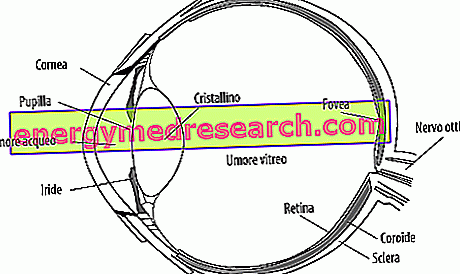Edited by Eugenio Ciuccetti, Obstetrician
Still today, it is very little known - and yet essential for the health and well-being of every woman - it is the muscular region commonly defined as pelvic floor. A rhomboid area that extends from the pubic symphysis to the coccyx, closing the abdominal-pelvic cavity down, surrounding and supporting the urethra, bladder and vagina up to the anorectal apparatus. Laterally its boundaries are substantially detectable at the level of the ischial tuberosities.
The pelvic floor has been long ignored for various reasons. First, it is a relatively "hidden" area of our body. An area between the thighs that we don't see. An area with which generally that daily and spontaneous relationship of awareness and contact is not established, which instead is established with a hand rather than a leg.
Secondly, that of the pelvic floor actually represents both the key region of defecation and urination as well as that of sexuality. Over the years, many social shame and cultural taboos have contributed to making it even more removed and forgotten.
The medicine itself, among other things, has achieved in recent years only a greater knowledge and understanding of its centrality, of its profound role and of its articulated meaning. Recently, for example, there has been talk and debate on a large scale about the prevention of perineal lacerations during childbirth and the consequences of episiotomy. Recently, more theoretical and practical attention has begun to spread towards female prolapses and incontinence. Recently the right dignity and effectiveness is recognized to the so-called "conservative" rehabilitation approaches. Approaches that are often able to integrate or even avoid the traditional surgical or pharmacological interventions.
We are not talking about female sexuality, which has only been recognized for a few decades - and not always so complete - as a playful and relational meaning as well as a reproductive one. It is no wonder then that even on this plane the pelvic floor has been long obliterated or misrepresented.
It is therefore essential that all those who deal with women's health and well-being in various ways develop a greater sensitivity towards this subject, deepening their knowledge and knowing how to spread the right information to women both in the preventive, therapeutic and rehabilitative fields.
This does not only concern physicians or healthcare professionals who are strictly understood. But also those who, for example personal trainers, occupy themselves at various levels of fitness and body movement in general. The protection of the pelvic floor in fact passes also and above all by the ability of every woman to recognize it and activate it automatically during the course of daily actions. A sneeze, a cough, the lifting of the shopping bag, the grandson's holding in his arms and even the execution of the abs in the gym, are all gestures that - increasing the internal pressure - stimulate this part of the body and require it right preparation and control.
It is therefore necessary, first of all, to know and remember some basic notions of anatomy and physiology: the pelvic floor, as mentioned, closes the pelvis downwards and serves primarily to support the pelvic organs such as the uterus and bladder. The containment of these organs - even when the woman is in an upright position or performs physical activities such as simple walking, which involve an effort, therefore an increase in intra-abdominal pressure - requires the integrity of the supporting musculoskeletal system and its innervation .
Importance of pelvic floor and rehabilitation »
Pelvic floor anatomy
When we talk about the pelvic floor we must therefore distinguish three muscle-aponeurotic planes:
A) The pelvic diaphragm, that is the innermost layer, formed by the elevator of the anus with its ilio-coccygeal, pubo-coccygeal bundles (medially to which the bundles of the two pubo-rectal muscles run) and ischio-coccygeal. These bundles form, both on the right and on the left, like two fans, characterized by a sort of common pivot (the coccyx). Instead, the so-called Fibrous Tendine of the Perineum, located between the vaginal and rectal canal, unites the two portions of the elevator of the anus, which in fact constitute a single functional unit. In fact, on the midline of the pelvic diaphragm we find the so-called Hiatus Genitale, ie an opening through which both the rectum and the vagina and the urethra pass. Laterally, finally, the pelvic diaphragm is inserted along the so-called Tendon Arch which flows from the pubis to the ischial spine while below the plane of the elevator of the anus is the ischio-rectal fossa.
B) The urogenital diaphragm has the shape of a triangle and is located below the elevator of the anus in the anterior portion of the perineum. This triangle is bounded at the base by the bis-ischial line, which ideally joins the two ischial tuberosities; the sides are represented by the so-called ischio-pubic branches of right and left; the vertex consists of the pubic symphysis. The urogenital trigone - as this diaphragm is also called - includes the Deep Transverse Muscle of the Perineum and the Pubo-Urethral Ligaments. Finally, the urogenital diaphragm has an opening on the midline, through which the urethra and the vagina pass.
C) We then have the so-called superficial layer of the sphincters. Four muscles belong to this. The ischio-cavernous (from the ischial tuberosity to the root of the clitoris); The cavernous bulb or constrictor of the vagina (from the fibrous center Tendon of the perineum to the clitoris); The superficial transverse of the perineum (from the fibrous tendon center of the perineum to the ischial tuberosity); The sphincter of the anus (located posteriorly). The anterior portion of the sphincter layer is also called the bulb-clitoral loggia and houses the cavernous bodies of the clitoris in addition to the bulbs of the vestibule.

Image source: //www.incontinet.com/kegelpix.htm
Importance of pelvic floor and rehabilitation »



